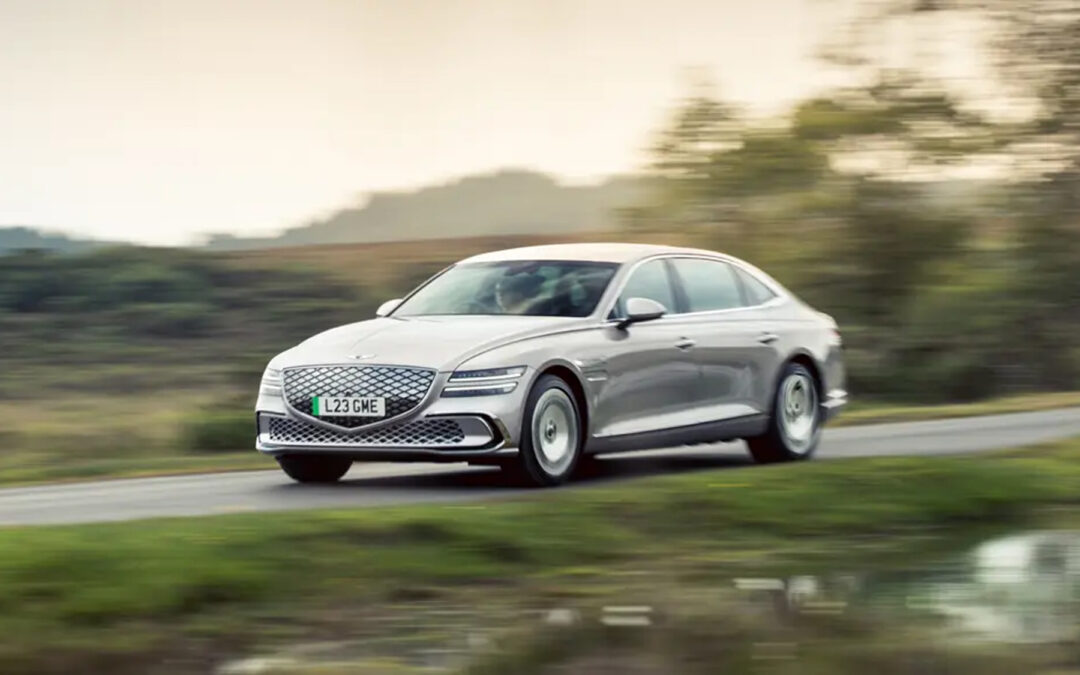Best luxury electric cars of 2025
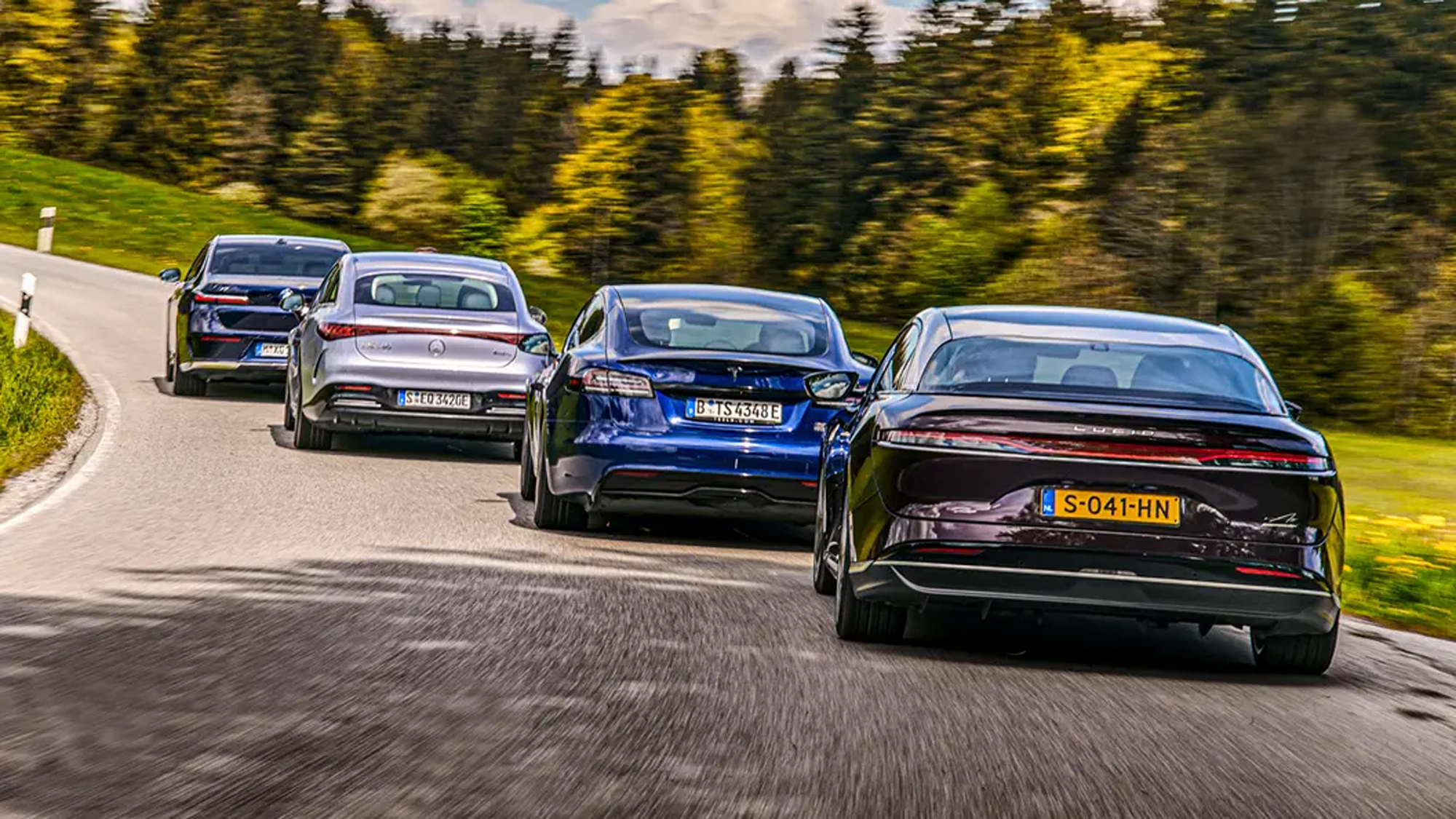
We’re a long way from the days of laughable electric cars like the ghastly G-Wiz, just take our best luxury electric cars list as an example. Sure, a good family EV will do the job if you want to just go from A to B efficiently, but these add a splash of style and sumptuous living to your journey.
Using electric power for a luxury car makes good sense, after all, thanks to the inherently quiet and refined nature of all-electric powertrains. But there’s more to a luxury car than just outright mechanical refinement, including facets such as fine build quality, excellent ride comfort, and high-end technology and features.
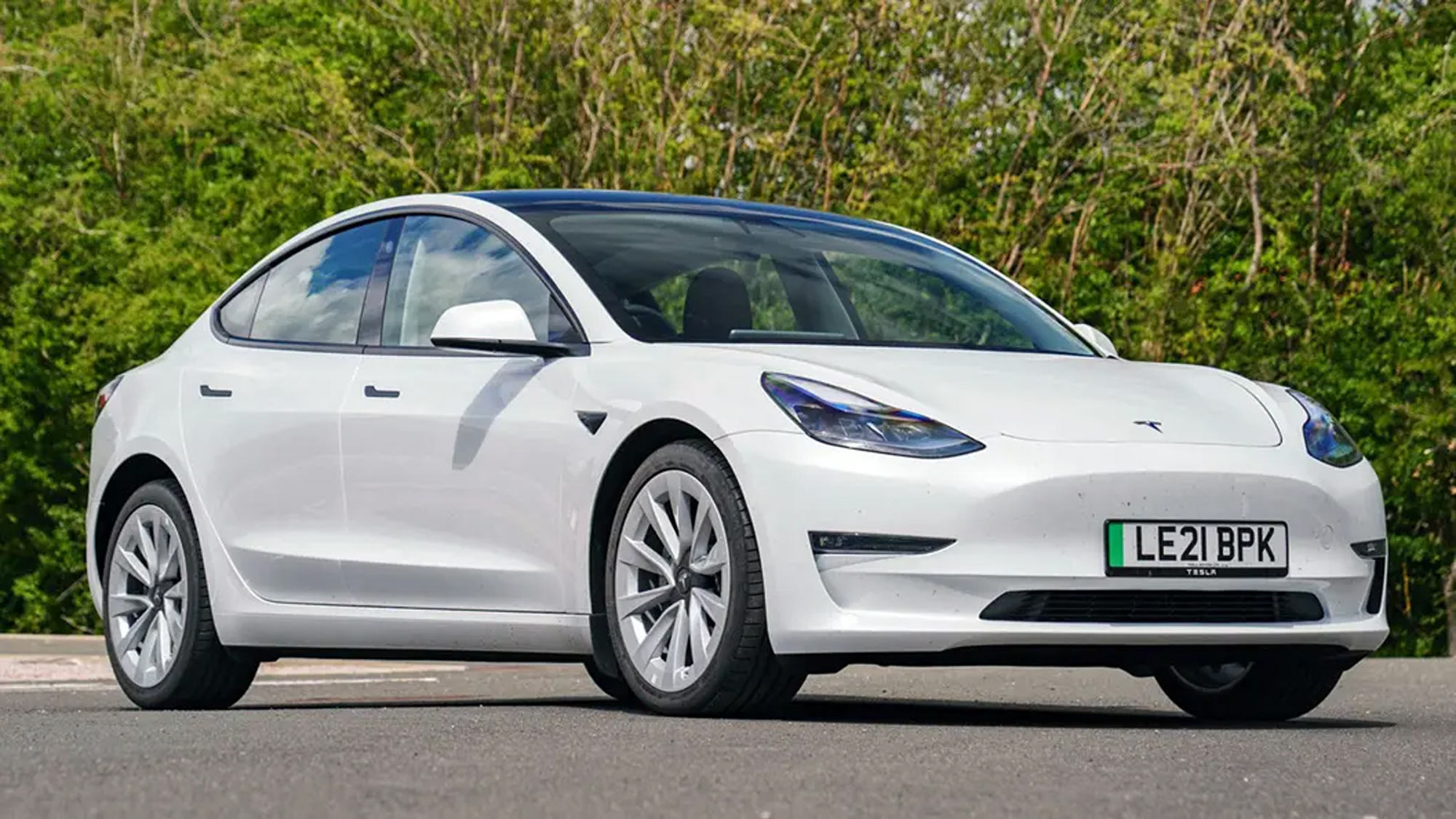
Which is the best luxury electric car? As tempting as it is to jump to one Rolls Royce-shaped conclusion, this list mixes rugged 4x4s with traditional saloons and even a quasi-estate. All are electric luxury cars that you’ll be pleased to come back to after a hard day captaining industry.
We’ll run through our favourites in this list, all recommended after being thoroughly tested by our experienced team.
BMW iX
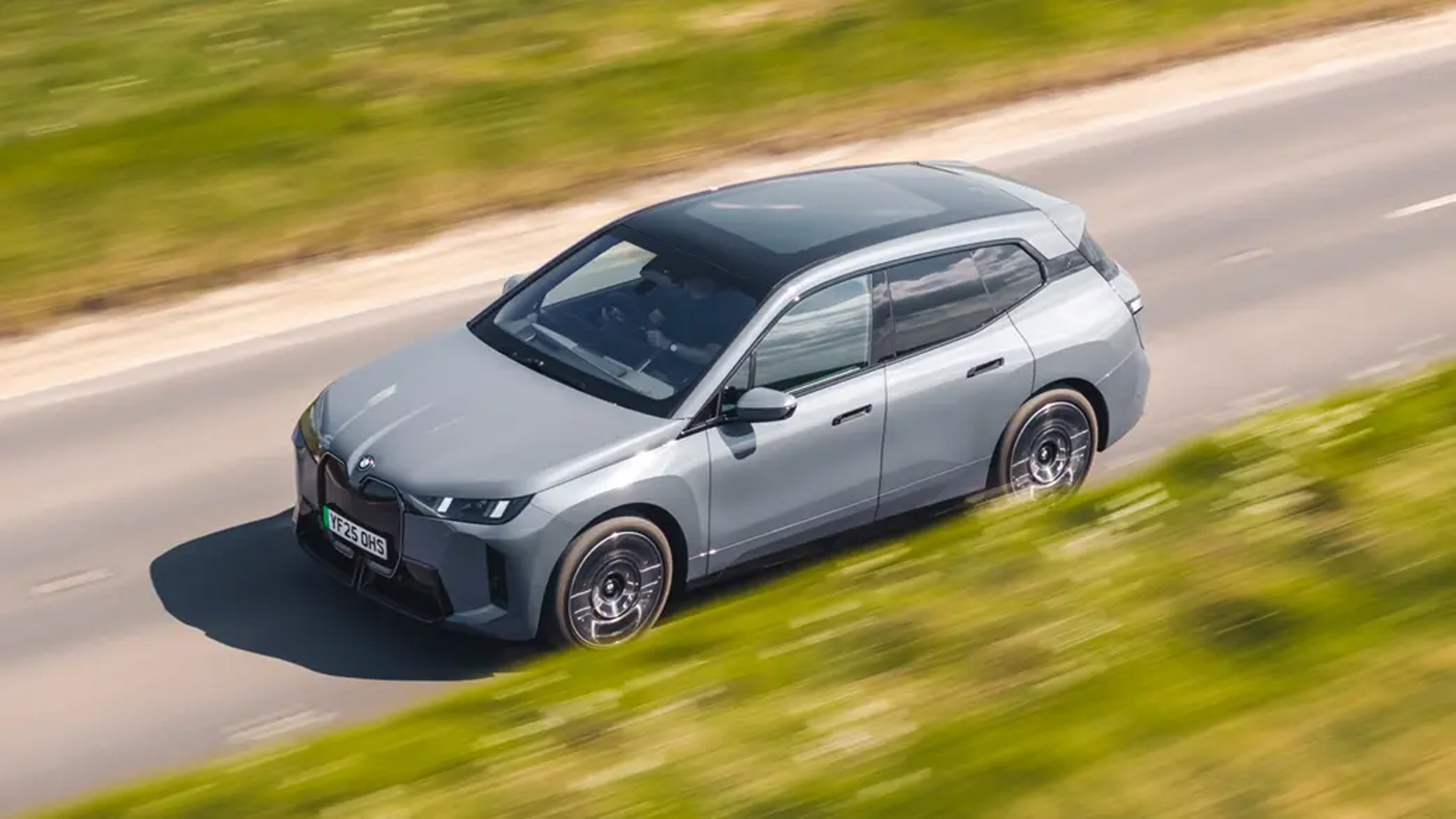
Best for: The best all-round electric SUV
Pros: Impressive range, powerful performance, and a luxurious interior
Cons: Premium price tag and design might not appeal to all
We were big fans of the iX anyway, but a 2025 refresh has made this e-SUV even better. Entry-level xDrive45 gets a 94.8kWh battery and twin electric motors for a WLTP-certified range of 374 miles and 402bhp – both significantly up on the outgoing xDrive 40. Jump up to xDrive60 and the battery swells to 109.2kWh for 537bhp and a chunky 426 mile range, making it our pick of the range
Step inside the iX and you’ll find some serious luxury, with features like a panoramic roof and a state-of-the-art iDrive infotainment system. When compared to rivals, the iX offers a unique blend of BMW’s signature driving dynamics and the benefits of electric propulsion. For example, the M70 version, while not a traditional M car, still provides an engaging driving experience, balancing agility with comfort. Overall, the BMW iX is one of the most complete EVs you can buy – if you don’t mind its looks.
Porsche Taycan Cross Turismo
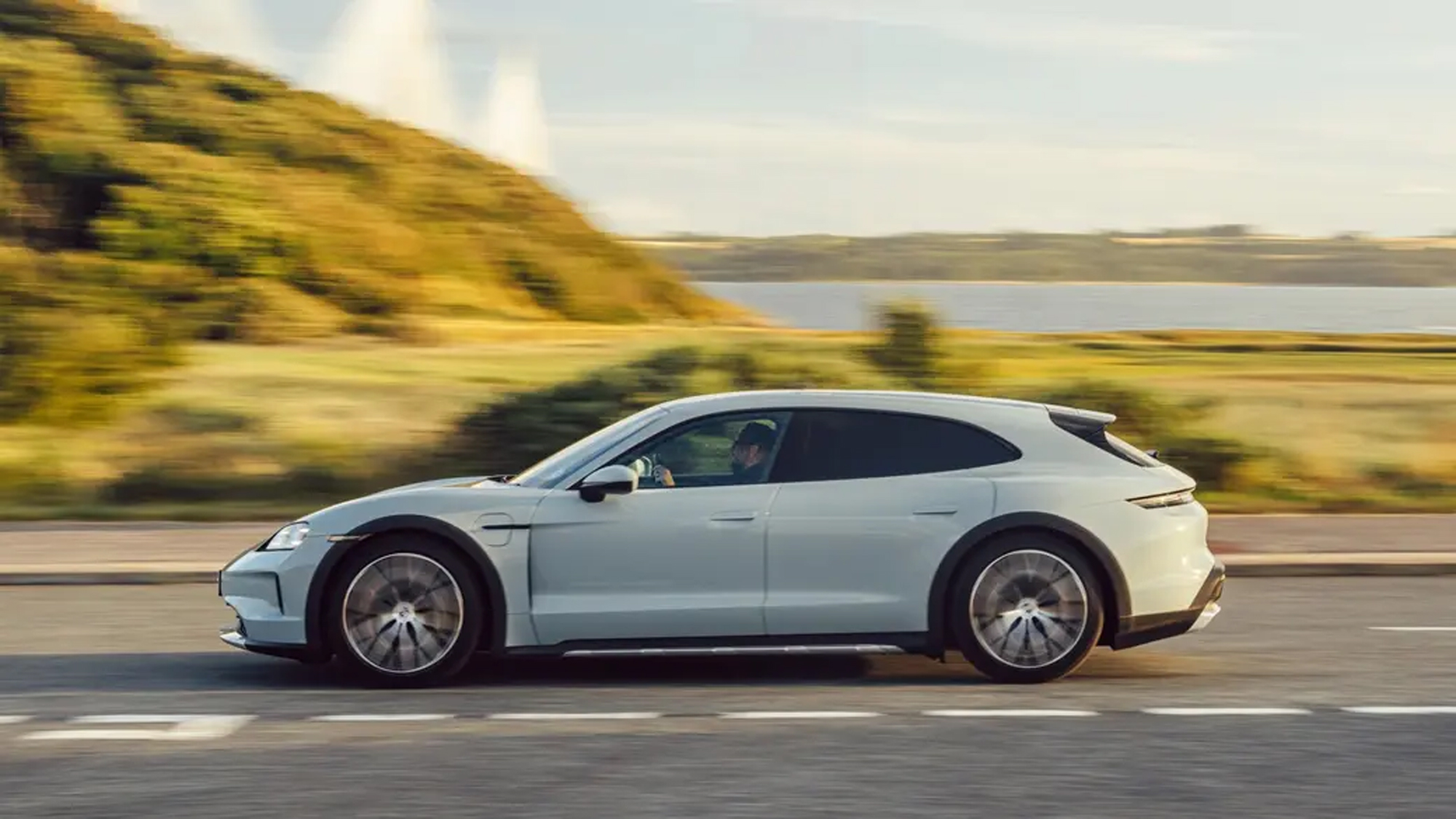
Best for: Enthusiasts wanting a sporty yet practical electric vehicle experience
Pros: Stellar performance, increased versatility, and impeccable build quality
Cons: Efficiency could be better; rear door access is slightly restrictive
Positioned as an ‘off-road’ Taycan, the Cross Turismo isn’t just trying to be an electric sports car but also a practical family vehicle. Charging times are speedy thanks to the car’s 800V charging system, ensuring practicality for longer journeys, and a 2025 facelift upped range and power.
The car’s performance is undeniably Porsche too, with the Turbo S variant boasting a staggering 939bhp and achieving 0-62mph in 2.5 seconds. The interior is everything you’d expect from the crest, and blends luxury and technology, with a focus on comfort and competitive rear-seat headroom. The boot space is adequate, but the rear doors could be more accommodating for easier access.
Despite these minor setbacks, the Taycan Cross Turismo stands out for its build quality, performance, and practicality. For those looking sports car thrills with family car convenience in an EV, the 4S Cross Turismo could be the ideal choice.
Rolls Royce Spectre Black Badge
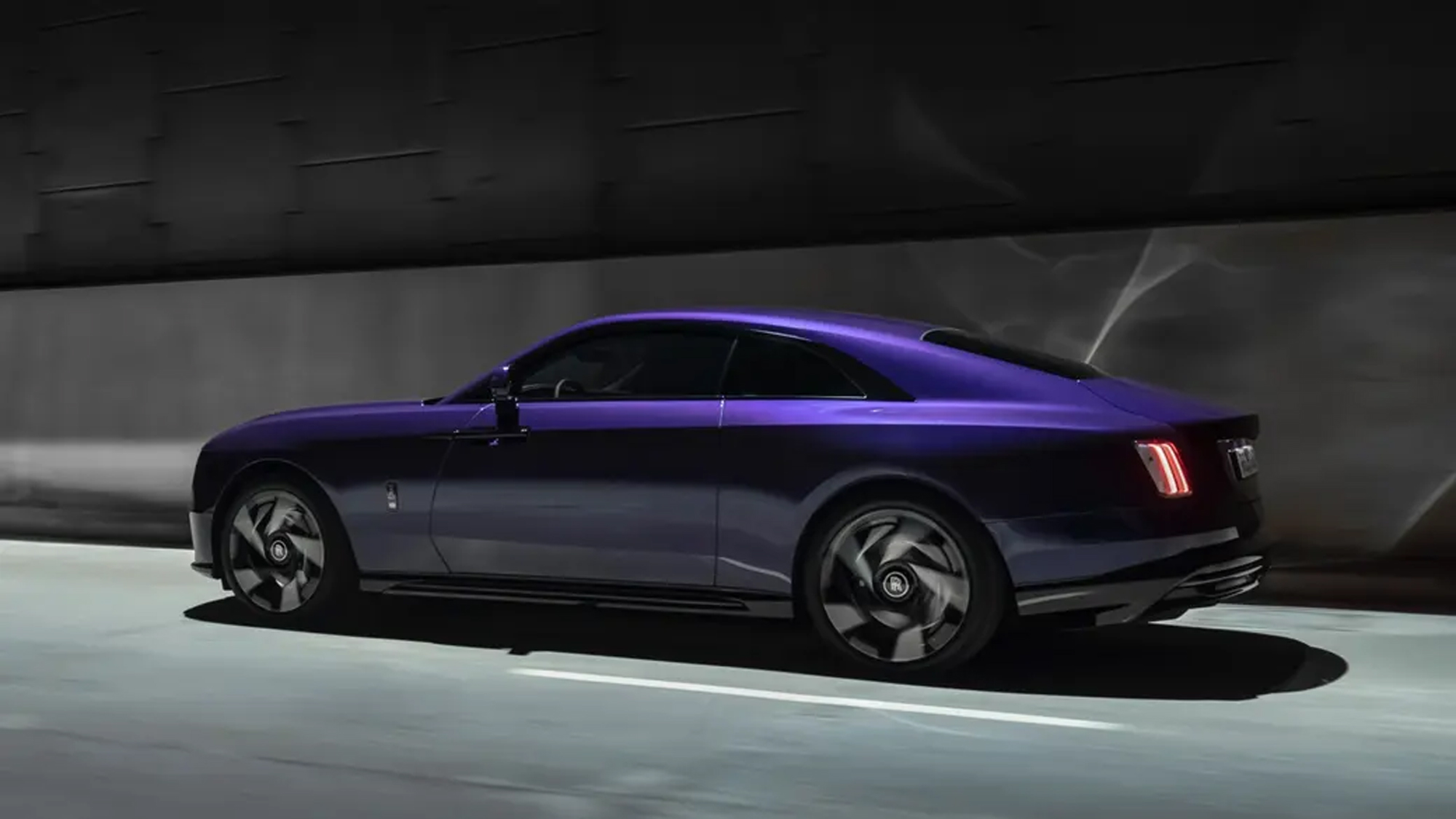
Best for: The final boss of luxury EVs
Pros: Gorgeous interior, thumping performance, more practical than you’d think
Cons: Range merely adequate
Rolls Royces have always been about the last word in serenity, so going electric is something of a no-brainer. The brand’s first production EV is a giant coupe that is best experienced as the more dynamic Black Badge model complete with a 650bhp punch. A 4.1 second 0-62mph time isn’t bad for 2900kg of car, and all that mass seemingly crushes most bumps that stand in its path.
You certainly won’t see anywhere near the 308-mile range if you make use of the power, although there are few finer places to sit in the automotive world while you’re waiting for it to top up. You’ll find lots of supple leather, ridiculously thick carpets and expensive trims that make this feel like a proper luxury experience that even Bentley can only dream of.
The icing on the cake is handling that’s far more entertaining than you’d ever imagine given the vastness of the Spectre. It’s not going to outperform a Taycan, but it’ll cover ground quickly and has good balance.
Genesis Electrified G80
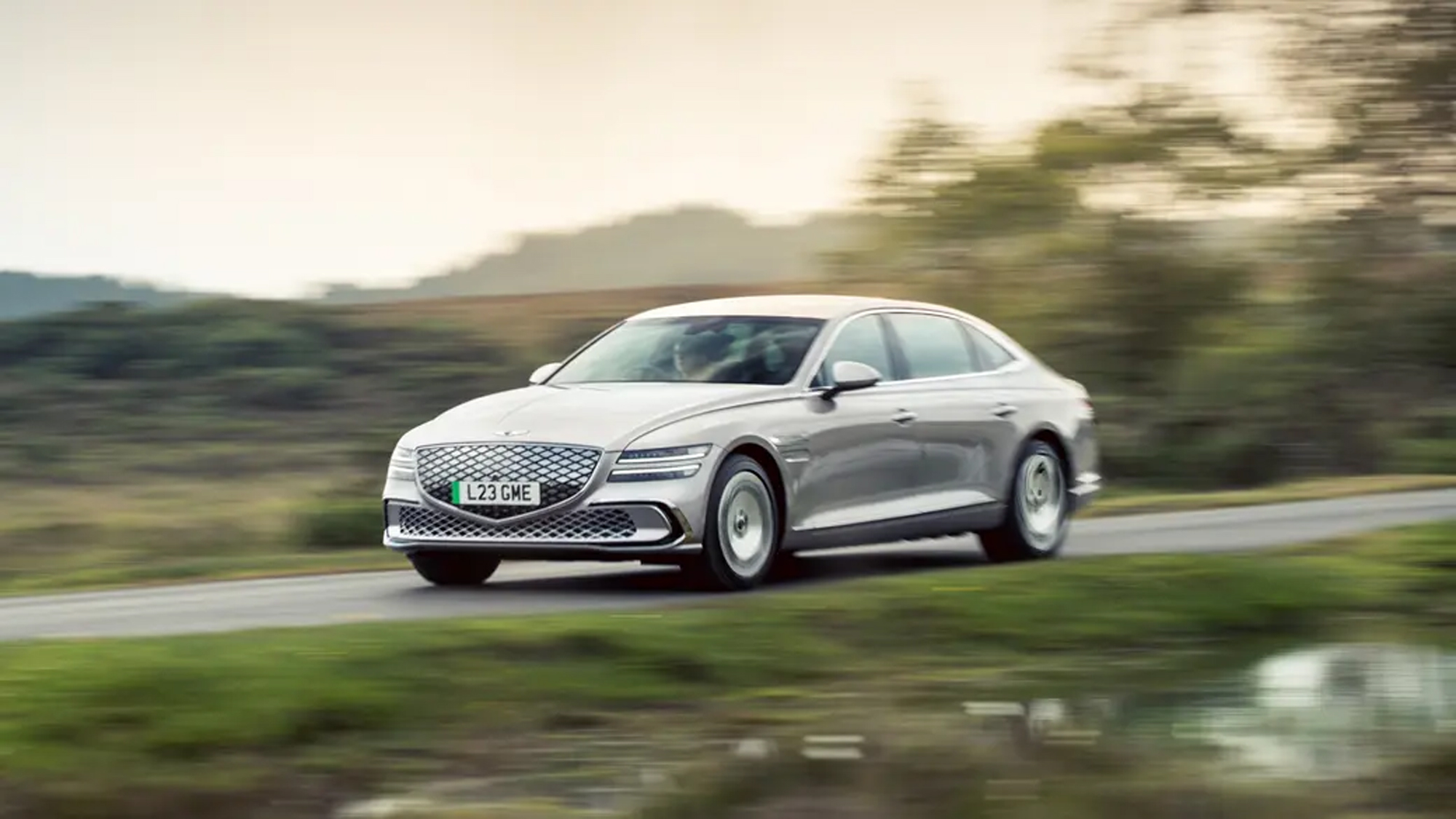
Best for: Luxury enthusiasts looking for a unique electric saloon experience.
Pros: Luxurious interiors, rapid charging, and a distinctive design
Cons: Expensive compared to established rivals, small boot
Initially launched with petrol and diesel power as well, the Genesis G80 is now only available in Electrified flavour and we’re fine with that. No six or eight-cylinder motor was ever offered in the UK, with the four-cylinder ICE offerings proving too unrefined and slow for such a luxurious car, whilst not even impressing with their efficiency.
A 2025 update saw the battery capacity increase to 94.5kWh for an official range of 354 miles, with a 10-80% rapid charge taking 25 minutes at a peak of 187kW. Neither figure is class leading, yet they’re certainly better than average. Only a dual motor all-wheel drive G80 is offered that pumps out 360bhp and manages 0-62mph in a brisk 5.1 seconds.
It’s the G80’s interior that plants it firmly on this list. It feels plusher and better screwed together than similarly priced BMW i5s and Mercedes EQEs, placing it closer to the i7 and EQS. And because the wheelbase has been extended as part of the facelift, there’s even more room to lounge in the back.
Audi e-tron GT quattro
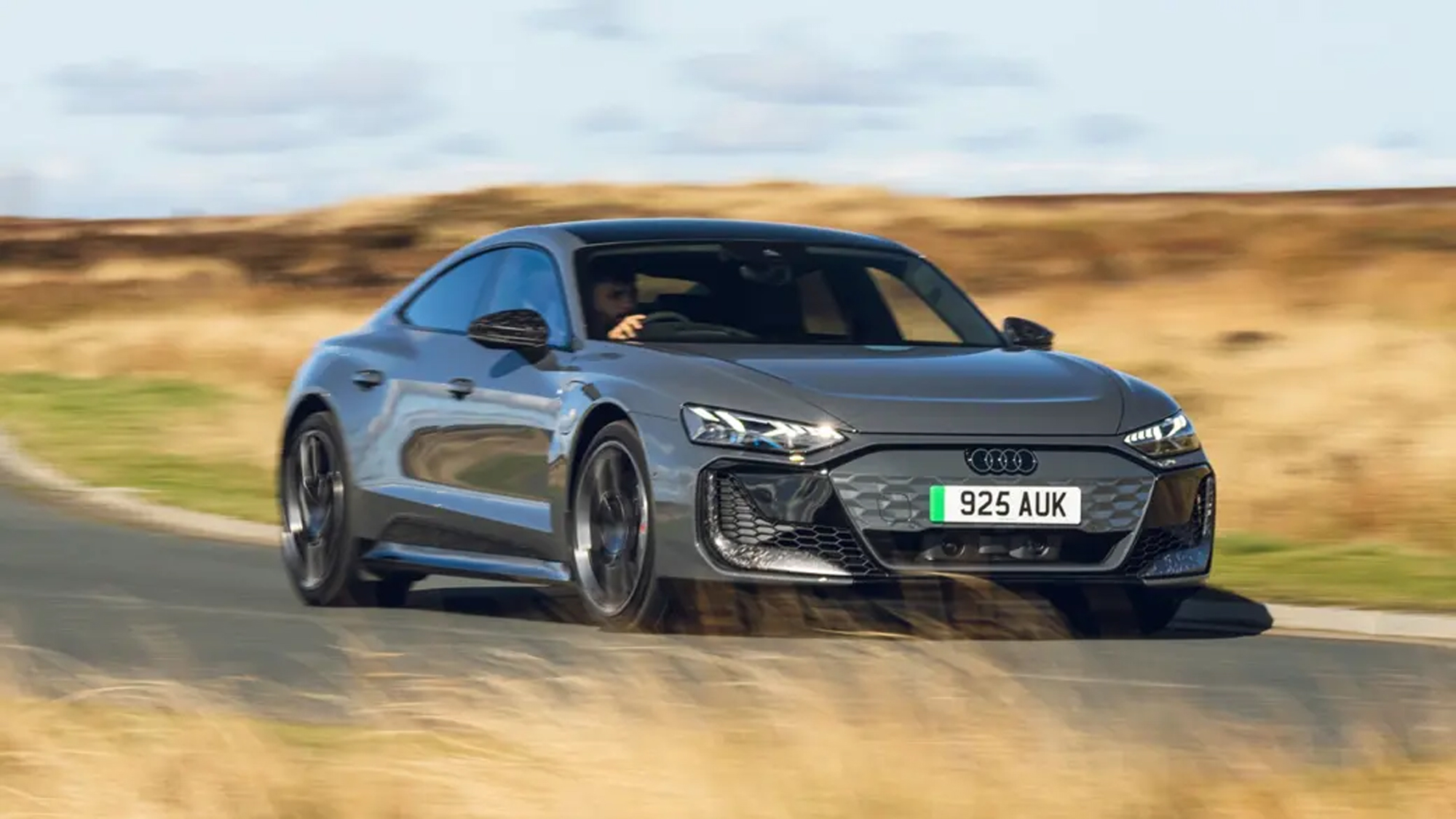
Best for: Those seeking a luxurious grand tourer experience in an electric vehicle
Pros: Luxurious design, impressive range, and true GT performance
Cons: RS variant seems conflicted; pricier than some rivals
Like the Taycan, the Audi e-Tron GT got a tickle in 2025 to boost power and range whilst updating the styling. That means battery size is up to 102kWh and there’s now 670bhp in launch mode or a mere 583bhp in normal use. An RS e-Tron GT is available with over 900bhp if you want the quickest accelerating Audi road car ever.
The interior is pure Ingolstadt, and is distinct from the Taycan’s design, focusing on digital instruments, high-quality materials and a more ‘Audi’ look. Unlike the sportier Porsche, the e-Tron GT’s driving dynamics are more geared towards comfort, making it ideal for longer drives and cross-continental journeys. Its 800-volt architecture ensures efficient charging, making long tours feasible with proper planning.
BMW i7
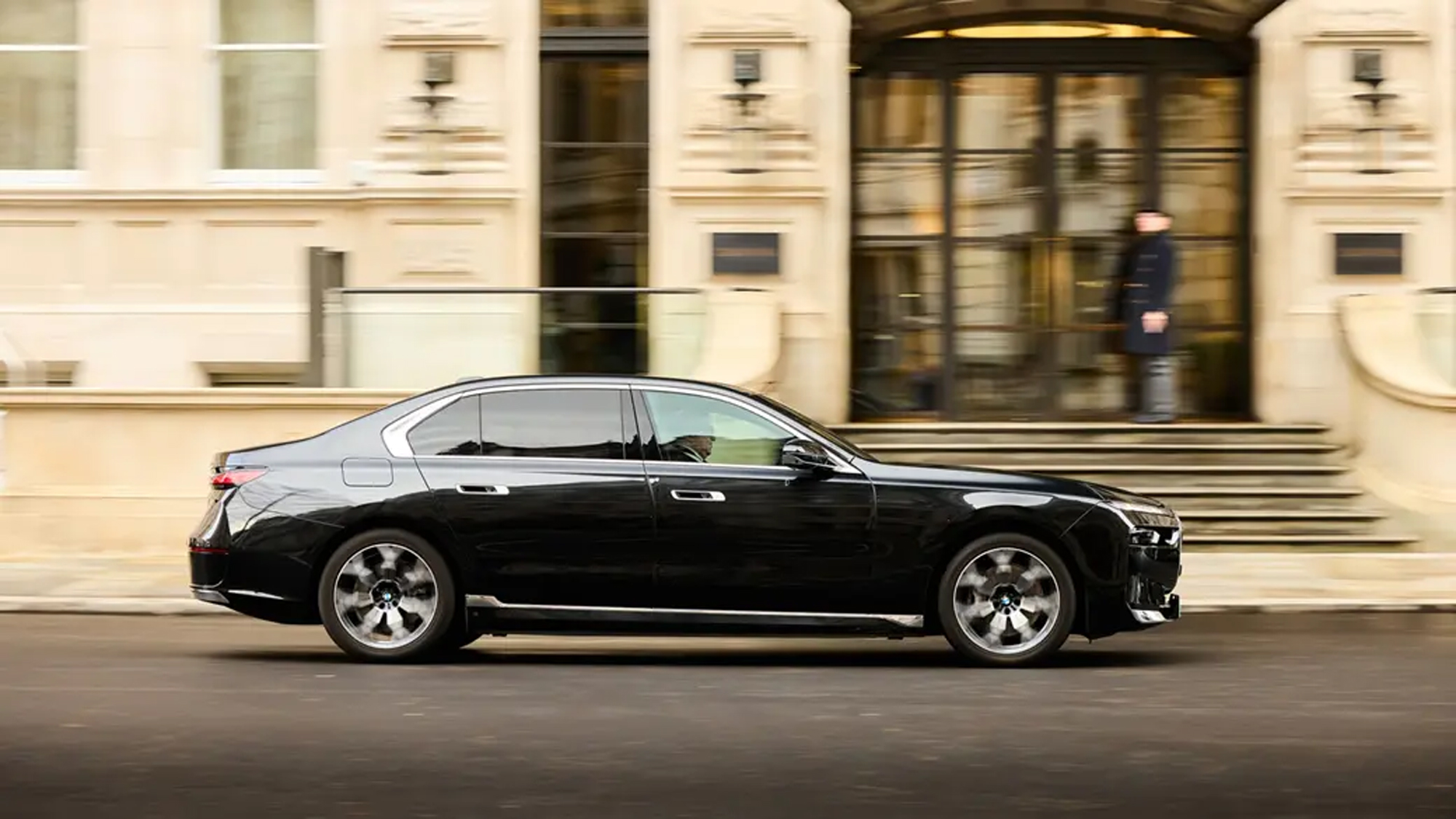
Best for: Ultimate luxury from a mainstream brand
Pros: Super plush interior, robust performance, impressive charging capabilities
Cons: Some may find the design polarising,
The BMW i7 is the Munich’s ultimate statement of luxury in the electric domain, and in practice it redefines the standards of opulence in EVs. Priced from over £100k, this electric iteration of BMW’s flagship 7-Series limousine stretches almost 5.5 metres and weighs over 2.7 tonnes. Under the floor sits a 101.7kWh battery, allowing for an impressive WLTP range of up to 388 miles. The performance figures are impressive too; with its dual electric motors, the i7 xDrive 60 churns out a combined 536bhp and 549lb ft of torque, propelling the car from 0-62mph in just 4.7 seconds.
An M70 version is available with 650bhp and 0-62mph in 3.7-seconds if you’re always running late for the next board meeting. Us? We’d be tempted by the base eDrive 50 as the 5.5-second 0-62mph run is plenty brisk enough. When it comes to charging, the i7 doesn’t lag either, adding 106 miles in a brisk 10 minutes with a 195kW DC charger.
Inside, passengers are treated to the best and most luxurious Munich has to offer; the i7 comes complete with the brand’s Curved Display iDrive system, ambient lighting, and plush interior materials. Where the i7 truly shines is in its meticulous blend of luxury, tech, and driving dynamics, setting it apart in the luxury EV segment – and particularly its EQS counterpart.
Mercedes G 580 with EQ Technology

Best for: Electric luxury that’ll go almost anywhere
Pros: Incredible off-road, still looks like a G, rapid
Cons: Terrible efficiency, you can’t tow with it, rear legroom just OK
Everyone at the CAR office has fallen for the G 580 hard, making this an easy one to add to the list. Each wheel gets its own electric motor which means its even better off-road than a petrol or diesel G despite weighing over three tonnes. Torque can be delivered precisely to whatever tyre can best use it, and it’s capable of spinning on the spot like a tank should you want to show off to friends.
Mercedes has done lots of detail work to significantly improve aero over the pre-update gen-two G whilst retaining that iconic shape. There’s only so much you can do with something so blocky though, so real world range is around the 200 mile mark. Given the G’s popularity in London, that shouldn’t be too much of an issue.
Lotus Emeya
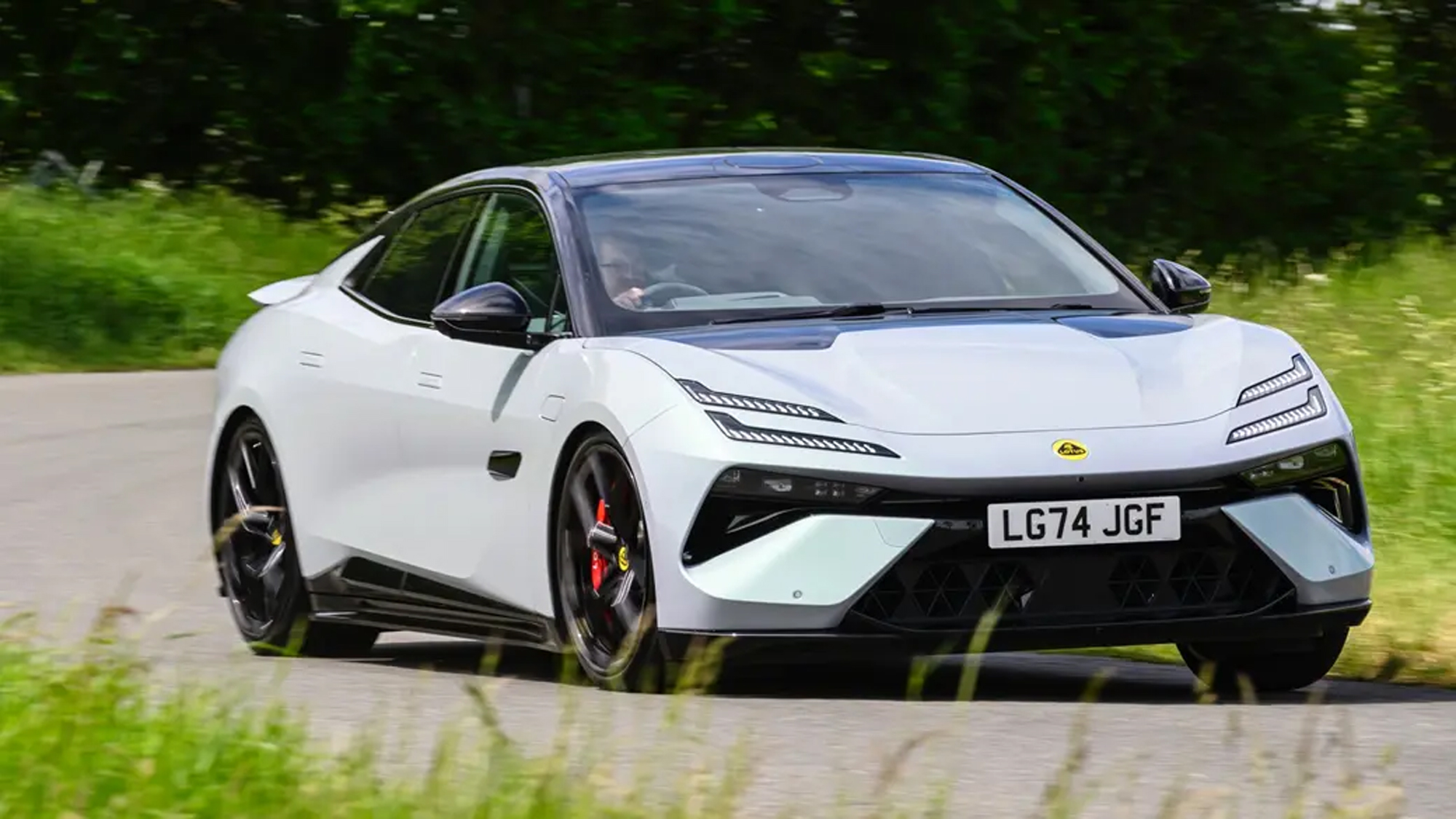
Best for: Those that won’t get too caught up on heritage
Pros: Monster charging rate, shockingly good interior, rapid acceleration
Cons: Not much fun to drive, grabby ceramic brakes
If your idea of a luxury car involves plenty of space in the back, the Emeya is a much better choice than the cosy Taycan. There’s more legroom for lounging and you can have rear seats with electric adjustment, heating, cooling and massage. It feels a lot more Avant Garde than the sober Porsche, and you won’t have to spend four figures on upgraded interior leather for a truly opulent feel, either.
Your cheapest way into the Emeya is the 600 which gets, funnily enough, about 600bhp that’s channeled to all four wheels. Air suspension and adaptive dampers are standard unlike the Taycan or e-Tron GT to give a ride that’s comfortable but still gives you some idea of the road’s surface. All sorts of clever chassis tech is available on the 600 and standard on the 900, but we wouldn’t bother.
Yes, the 900 with its 905bhp is devastatingly fast, yet it never involves or entertains like a Taycan, and isn’t as comfortable as the equivalent actively sprung Porsche, either. You’re better to save your money, have a comfier ride and enjoy the Emeya’s luxury at a slower speed.
Lucid Air

Best for: The best electric sports saloon not available in the UK
Pros: Very efficient or silly fast, loads of room for its size, engaging handling
Cons: Left-hand drive only, top models get very expensive
You’d be forgiven for drawing a blank at the name Lucid. This American-based and Saudi-backed EV startup has a handful of dealers in Europe and there’s no right-hand drive option yet, but we’d recommend keeping a very close eye on this exciting brand.
A few of CAR’s lucky staffers have driven the Air saloon, and each one has come away impressed by the depth of engineering you feel in every model. Lucid builds its own motors that are much smaller than rivals’ yet still pack a mighty punch and are ridiculously efficient. If the electronics are Tesla-rivalling, the way Lucids drive knock the original EV disruptors cars into a cocked charging port.
Where Teslas feel like someone’s thought ‘good enough’, Lucids give the impression of many hours polishing the dynamics for a fantastic blend of comfort and driver involvement. Even the barmy 1234bhp Sapphire is more than just a drag racing tool, while all have plush interiors with more room than you’d think.
Polestar 3
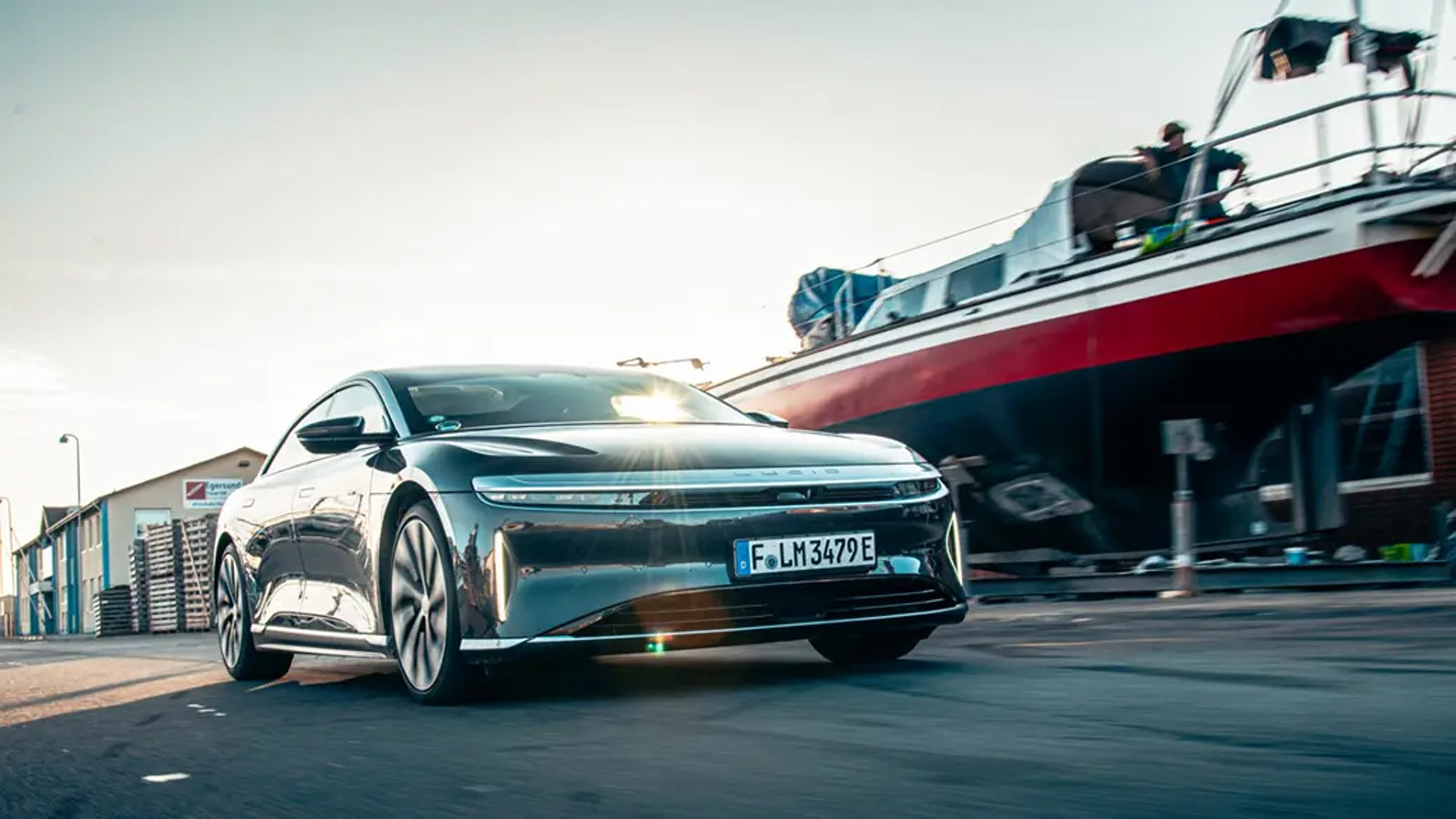
Best for: A sense of Nordic well-being
Pros: Tonnes of rear legroom, impressive range, dual-motor handling sharpness
Cons: Pokey boot, stiff-riding Performance Pack
Think of the Polestar 3 as the Volvo EX90‘s less frumpy sibling. Where that SUV has conventional proportions that allows generous seating for five and a couple of third row seats for smaller individuals, the 3 is all about second row space, even at the expense of cargo capacity.
You’re left with a package that gives those in the back almost as much room as those in the front. Combined with a panoramic roof and optional light coloured leather, you get a minimalist interior that looks and feels expensive and stylish. However, a few more physical buttons would be welcome, and the standard fabric upholstery feels like a cheap running shoe. You have been warned.
On the road it certainly feels a lot more dynamic than the EX90, especially if you’ve got the Performance Pack installed. A limited-slip differential on the back axle gives fantastic traction or can be used to help rotate the car a little under power. It’s not the comfiest e-SUV because of this sporting intent, but it’s certainly no bone shaker, either.
And one to avoid:
Mercedes EQS SUV
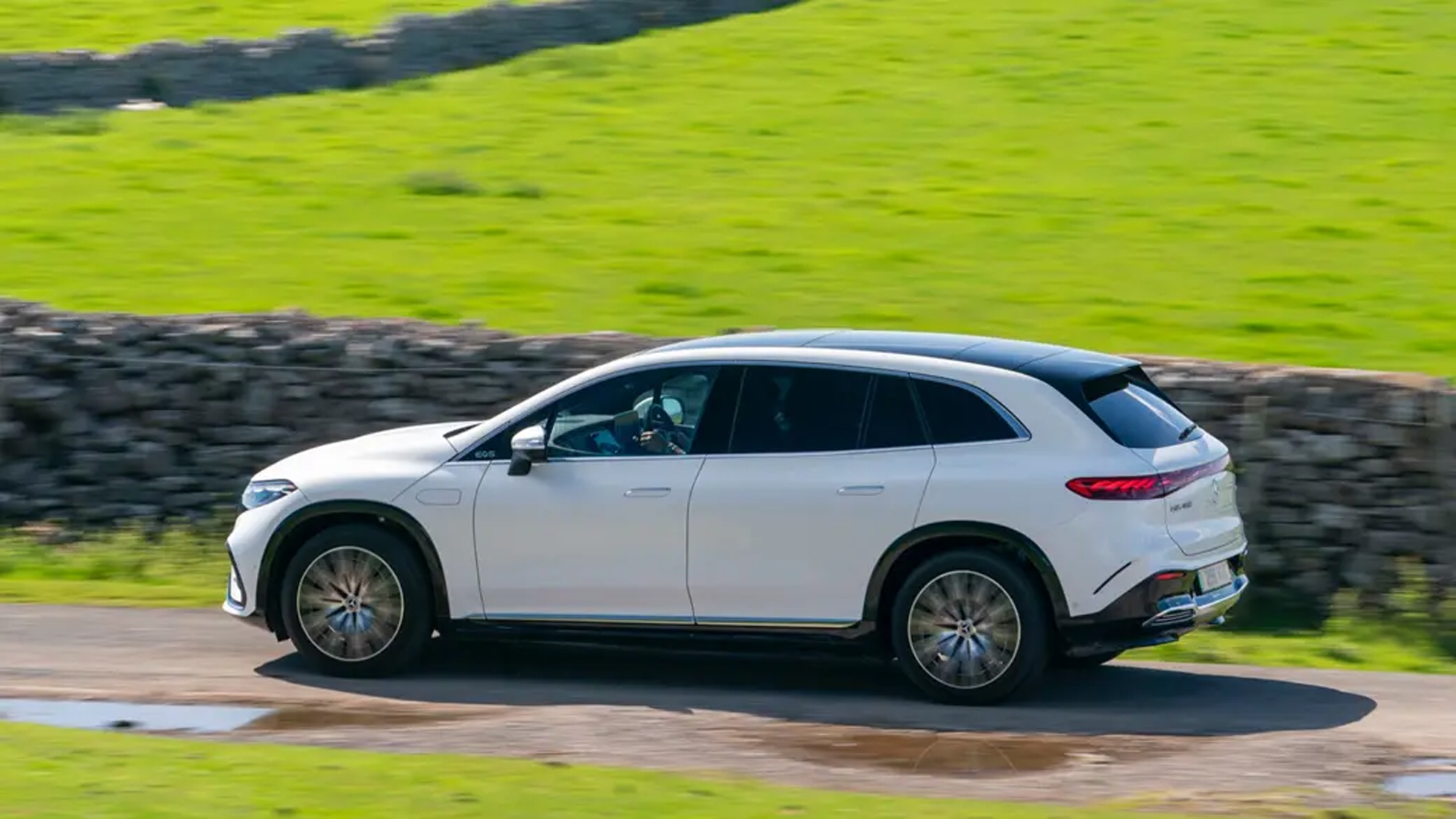
In theory, the EQS SUV should be way better than the G 580 that we love so much. It goes far farther on a charge, has more rear seat space, a third row of seats and is even available in a Rolls-rivalling Maybach version.
However, while the G 580 is a masterpiece off road and has film star desirability, the EQS SUV just doesn’t do anything very well. Its screen-filled interior feels cheap and flimsy in comparison and it just doesn’t drive very well at all.
Our verdict
Though there are plenty of very strong options on this list, none of them are able to surpass the BMW i7 on pure opulence for the money. Upon its release, it set a real benchmark of what luxurious electric motoring can be like – a high water mark for other manufacturers to aspire to.
Sure, the Rolls Royce Spectre may pip the i7 in a few regards, but as for the luxury EVs you can actually get your hands on and don’t cost the same as a suburban terrace house, the i7 leads the pack.
How we tested
Every car we get our hands on goes through a rigorous testing process. Our highly experienced team will leave no stone unturned as they put the car through its paces, examining the way it drives, the interior and the price point to name a few criteria. To find out more, head over to our how we test cars page.

